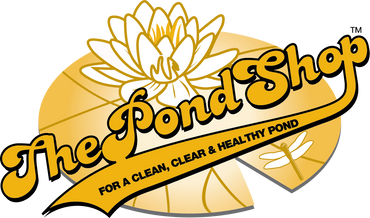Sago Pondweed

Sago pondweed is an aquatic herbaceous plant up to 3 feet tall. Sago pondweed is generally completely submerged except the reproductive stalk that peaks above the water and flowers June to September. It does not have many branches at the base, becoming fuller towards the top. The stems are slender and flexible. The leaves are narrow from 1 to 4 inches long and up to half an inch wide. The flowers are very small and greenish and grow in several whorls along the flower spike. Sago pondweed is found in fresh to moderately brackish water and is generally not very competitive when there are other plants in the pond. Sago pondweed prefers slow-moving or standing waters, but it tolerates strong waves and currents better than most plants because of its long roots and rhizomes. Sago pondweed is one of the most important sources of food for waterfowl in North America. The birds feed on the entire plant, particularly its nutrient-rich seeds and tubers. Pond owners are encouraged to control rather than eradicate Sago pondweed from their ponds.
Prevention
Asexual reproduction, the more common reproduction method, takes place when tubers form, break off the plant and grow into new plants later in spring. Sexual reproduction takes place from June to August when flowers bloom and release pollen, which floats on the surface of the water. After fertilization, seeds form on the flower spike and fall into the water in the fall. Sago pondweed prefers nutrient-rich sediments. Sago is has a lower reproduction rate; therefore easier to manage. Lowering nutrient in the water, removing the plants as soon they start forming from tubers in the spring is the best way to prevent a Sago pondweed infestation.
Biological Control
Beneficial Bacteria products and enzymes such as PZ900 feed on nutrients in the water making them unavailable for plant growth. Reducing nutrients can help prevent invasion.
Physical/Mechanical Control
Since most aquatic plants are perennial, they have underground porting that can re-sprout new shoots, so it is essential to harvest below ground growth (roots and rhizomes) for effective control. For Larger bodies of water, motor-driven crafts might be necessary. Cutting pondweeds using an Aquatic Weed Eradicator (A.W.E.) or a Lake Rake works the same as mowing the lawn; the weeds will not be eliminated, but they can be prevented from growing to the surface and becoming a nuisance. Physical removal in conjunction with chemical control will maximize success.
Dyes and colorants reduce aquatic plant growth by limiting sunlight penetration and reducing photosynthesis.
Aeration has also been used as a mechanical approach to hinder pondweed proliferation. The added oxygen will accelerate the decomposition process of nutrients that pondweeds need to live.
Chemical Control
When used carefully according to the label instruction, aquatic herbicides can be safe and effective management tools. The products that have been successful in treating sago pondweed individually or in combination are Reward and Weedtrine D, Aquathol K – liquid and Aquathol Super K – granular, Propeller, Sonar A.S., and Sonar RTU. A nonionic surfactant Cygnet Plus should be mixed in solution with herbicides when plants are treated.
Reward is a fast-acting contact herbicide, highly effective in killing any part of the plant that comes into contact with.
Weedtrine D is a contact, non-volatile herbicide for use in controlling submersed and floating aquatics weeds. Weedtrine-D has rapid absorption and herbicide action.
Aquathol K (liquid) is a concentrated, highly soluble contact herbicide, effective against a broad range of aquatic plants.
Aquathol Super K (granular) this contact herbicide has been effective on pondweeds and can be mixed with copper compounds for additional efficiency.
Sonar A.S. is a long-acting systemic herbicide ideal for water bodies with minimal flow. Simply mix Sonar A.S. with water and spray throughout the surface of the water or pour in different spots around the pond. Sonar A.S. does not have water use restrictions.
Sonar RTU is a long-acting, systemic, easy to use herbicide. Sonar RTU does not require mixing, simply open the bottle and treat from the shoreline.
Propeller is a broad spectrum, fast acting contact algaecide/herbicide. It comes in a water dispersible granule that mixes with water to be sprayed or pour. Propeller should be applied to actively growing plants or algal blooms.
Cygnet Plus is a nonionic wetting agent, sticker, activator, and penetrant all in one. Cygnet Plus increases the effectiveness of herbicides uptake into the plant tissue.
